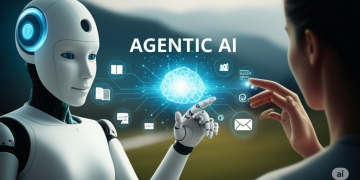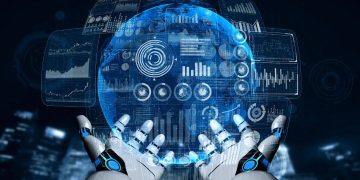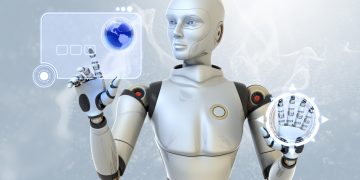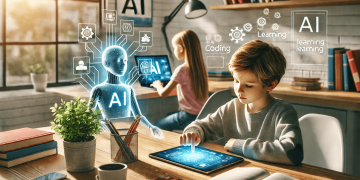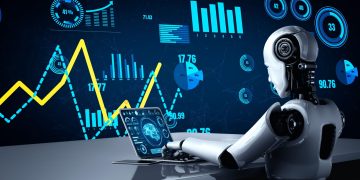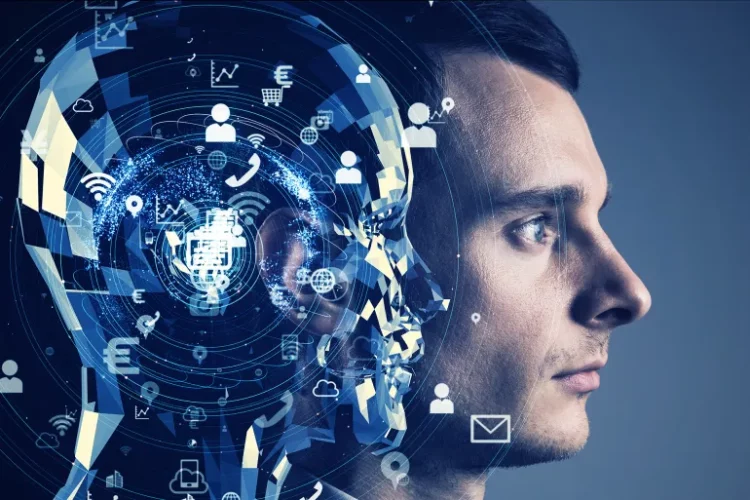Introduction
Artificial Intelligence (AI) has become an integral part of business operations and software development, shaping industries ranging from healthcare to finance, retail, and entertainment. As we move into 2025, the significance of AI will only increase, with even more sophisticated tools and platforms emerging to help developers build smarter applications and businesses optimize their operations. From automating processes to delivering personalized customer experiences, AI platforms will provide the capabilities needed to meet growing expectations.
For businesses, integrating AI tools can lead to significant improvements in efficiency, customer satisfaction, and profitability. For developers, having access to reliable AI frameworks can simplify the creation of innovative applications, making it easier to implement machine learning models, automation systems, and advanced analytics. This article reviews the most essential AI tools and platforms expected to be must-haves for developers and businesses by 2025.
Section 1: Key Trends in AI for 2025
1.1 The Evolution of AI Tools
AI tools have evolved from basic automation systems to highly advanced platforms capable of understanding complex data, predicting outcomes, and even making decisions. By 2025, we can expect AI to become even more pervasive, making it an indispensable asset across industries. Whether through improving decision-making, enhancing product recommendations, or optimizing supply chains, AI tools will be at the heart of business strategies.
1.2 Democratization of AI
In 2025, the accessibility of AI tools will have dramatically improved, with more no-code and low-code platforms that allow businesses and developers to leverage AI without extensive knowledge of data science or programming. These tools will enable smaller businesses to tap into the power of AI, leveling the playing field.
1.3 AI for Automation
AI will continue to drive automation across business functions, including marketing, customer support, inventory management, and even HR. Tools like robotic process automation (RPA) and AI-driven chatbots will become more advanced, offering businesses a significant boost in productivity and operational efficiency.
1.4 AI-Powered Analytics
With the explosion of big data, AI-powered analytics tools will be crucial for businesses in deriving actionable insights. These tools will make data-driven decision-making more accessible and effective, helping businesses analyze trends, customer behavior, and operational bottlenecks with greater precision.
Section 2: Must-Have AI Tools for Developers in 2025
As AI continues to advance, developers will rely on cutting-edge platforms to build intelligent systems and applications. Here are the most important tools that developers should have in their arsenal in 2025.
2.1 TensorFlow (Google)
TensorFlow has long been one of the most popular AI frameworks for developers. Known for its flexibility and scalability, TensorFlow continues to evolve, offering a wide range of tools to build machine learning (ML) models for various applications, including deep learning, natural language processing (NLP), and computer vision.
Why It’s Essential for Developers:
- High Scalability: TensorFlow’s scalable nature makes it suitable for everything from small projects to large-scale enterprise applications.
- Comprehensive Ecosystem: It includes tools for model training, model serving, deployment, and optimization (TensorFlow Lite for mobile, TensorFlow.js for web applications).
- Integration: TensorFlow easily integrates with other platforms like Kubernetes and TensorFlow Extended (TFX) for production pipelines.
2.2 PyTorch (Facebook)
PyTorch is a preferred tool for many developers, particularly those working in academic and research settings. Known for its flexibility and ease of use, PyTorch has gained significant popularity in the machine learning community.
Why It’s Essential for Developers:
- Dynamic Computational Graph: Unlike static frameworks, PyTorch supports dynamic computational graphs, making it easier for developers to debug models and experiment.
- Native Python Support: PyTorch is Pythonic and integrates seamlessly with Python libraries, making it easy for developers familiar with Python to adopt.
- Growing Community: PyTorch has a large, active community that contributes to its continued development and provides vast resources, tutorials, and pre-trained models.
2.3 Hugging Face Transformers (NLP)
For developers focusing on natural language processing (NLP), Hugging Face has become an indispensable library. It provides pre-trained models for various NLP tasks, including text generation, sentiment analysis, and language translation.
Why It’s Essential for Developers:
- Pre-Trained Models: Hugging Face offers a wide range of pre-trained models such as BERT, GPT, and T5, enabling developers to implement NLP applications quickly without training models from scratch.
- Extensive Documentation: The library offers comprehensive tutorials, making it easy for developers to understand and integrate NLP models into their applications.
- Active Community: Hugging Face has a large community of developers contributing to its model repository and resources.
2.4 OpenAI Codex
OpenAI Codex is a powerful AI tool that can generate code from natural language prompts. It’s particularly useful for developers who want to increase productivity by automating routine coding tasks or who want to quickly prototype applications.
Why It’s Essential for Developers:
- Code Generation: Codex can generate complex code based on natural language descriptions, making it easier for developers to focus on higher-level tasks.
- Multi-Language Support: Codex supports various programming languages, including Python, JavaScript, and Ruby, among others.
- Productivity Boost: Codex helps developers generate boilerplate code quickly, enabling them to accelerate development cycles.
2.5 NVIDIA Deep Learning AI Tools
NVIDIA has been a leader in AI hardware and software for years. Its deep learning tools, such as CUDA, cuDNN, and TensorRT, are essential for developers working with large datasets or complex neural networks.
Why It’s Essential for Developers:
- GPU Acceleration: NVIDIA’s GPUs are designed to accelerate deep learning tasks, significantly reducing training times for large models.
- Comprehensive Toolkit: NVIDIA provides an end-to-end suite for deep learning, from data processing and model training to optimization and deployment.
- Cross-Platform Support: NVIDIA’s tools integrate seamlessly with frameworks like TensorFlow, PyTorch, and Keras, enabling developers to work across platforms.

Section 3: Must-Have AI Tools for Businesses in 2025
While developers focus on building AI models, businesses need tools that make it easier to integrate AI into operations and provide actionable insights. Here are the most crucial AI tools for businesses in 2025.
3.1 Microsoft Azure AI
Microsoft Azure AI is one of the most comprehensive cloud platforms for building and deploying AI applications. It offers a wide range of AI services, including machine learning, computer vision, and speech recognition, that businesses can use to optimize operations.
Why It’s Essential for Businesses:
- End-to-End Solutions: Azure AI provides tools for building, training, and deploying AI models at scale.
- Pre-Built Services: Azure includes pre-built models for computer vision, language understanding, and speech recognition, allowing businesses to quickly integrate AI without in-depth technical knowledge.
- Security and Compliance: With built-in security features and compliance certifications, Azure is well-suited for businesses in regulated industries.
3.2 IBM Watson
IBM Watson has been a leader in AI for enterprises, offering a wide range of solutions for data analysis, customer service, and business automation. Its services include Watson Assistant for AI-powered chatbots and Watson Discovery for advanced data search and analysis.
Why It’s Essential for Businesses:
- Industry-Specific Solutions: Watson provides customized solutions for industries such as healthcare, finance, and retail.
- Natural Language Processing: Watson’s NLP capabilities allow businesses to automate and optimize customer interactions with AI-driven chatbots and virtual assistants.
- Advanced Analytics: Watson’s AI-powered analytics tools can help businesses gain valuable insights from large datasets, improving decision-making and operational efficiency.
3.3 Google Cloud AI
Google Cloud AI offers a powerful suite of AI tools that can be used by businesses to integrate machine learning and AI into their workflows. With services like AutoML, natural language processing, and vision AI, Google Cloud makes it easier for businesses to harness the power of AI.
Why It’s Essential for Businesses:
- AutoML: Google Cloud AI offers AutoML, which enables businesses with little machine learning expertise to create custom models tailored to their needs.
- Pre-Trained Models: Google provides pre-trained models for text analysis, image recognition, and video intelligence, making it easy to add AI to existing systems.
- Scalable Infrastructure: Google Cloud provides robust cloud infrastructure for businesses looking to scale their AI applications.
3.4 Salesforce Einstein
Salesforce Einstein is an AI-powered tool integrated directly into Salesforce’s CRM platform. It provides businesses with intelligent insights, automates repetitive tasks, and personalizes customer interactions.
Why It’s Essential for Businesses:
- AI for CRM: Einstein helps businesses enhance customer relationships by delivering predictive analytics, lead scoring, and personalized recommendations.
3.5 UiPath (RPA)
Robotic Process Automation (RPA) is gaining traction as businesses seek to automate repetitive tasks, reduce human error, and increase operational efficiency. UiPath is one of the leaders in the RPA space, offering tools that help automate workflows across a wide range of industries.
Why It’s Essential for Businesses:
- Automation at Scale: UiPath allows businesses to automate end-to-end processes, ranging from basic administrative tasks to complex workflows involving multiple systems.
- AI Integration: UiPath integrates AI capabilities into RPA, enabling intelligent automation that can adapt to changing conditions and perform tasks that traditionally required human judgment.
- Cross-Platform Support: UiPath supports integration with a wide variety of business applications, including ERP, CRM, and HR management systems.
Section 4: The Future of AI Tools for Developers and Businesses
As we look toward the future, AI tools will continue to evolve, making it easier for both developers and businesses to harness the power of AI. By 2025, several trends are expected to shape the next generation of AI platforms:
4.1 More User-Friendly Platforms
In the coming years, we will see an increasing number of AI tools designed for non-technical users. These no-code and low-code platforms will enable business users to build and deploy AI models without needing deep technical expertise. This democratization of AI will empower a broader range of businesses to innovate and optimize processes using AI.
4.2 Advancements in Natural Language Processing (NLP)
Natural language processing tools are rapidly advancing, allowing machines to understand and interact with human language in more sophisticated ways. We can expect further improvements in chatbots, virtual assistants, and content generation tools, which will allow businesses to automate communication and enhance customer experiences with minimal manual intervention.
4.3 AI for Edge Computing
With the rise of the Internet of Things (IoT), AI will increasingly be deployed at the edge, closer to where data is generated. This will reduce latency and bandwidth usage, making real-time decision-making more feasible. By 2025, businesses will be leveraging edge AI for everything from predictive maintenance in manufacturing to real-time fraud detection in finance.
4.4 Ethical AI
As AI becomes more integrated into business operations, there will be an increased emphasis on ethical AI practices. In 2025, tools that help businesses monitor and mitigate bias in AI models, ensure data privacy, and comply with regulations will become essential. Transparency and fairness will be at the forefront of AI development and usage.
4.5 AI-Powered Collaboration Tools
AI will play a significant role in enhancing collaboration in businesses, especially as remote work becomes more prevalent. AI-powered collaboration tools will help teams work more efficiently, from intelligent scheduling and project management to automatic summarization of meetings and documents.
Section 5: Conclusion
The landscape of artificial intelligence in 2025 will be marked by more powerful and accessible tools that cater to both developers and businesses. As businesses seek to stay competitive, adopting AI technologies will be crucial for driving innovation, improving customer satisfaction, and optimizing operations.
For developers, platforms like TensorFlow, PyTorch, Hugging Face, and OpenAI Codex will continue to be essential in building cutting-edge applications. The increasing sophistication and accessibility of these tools will empower developers to create more efficient, scalable, and intelligent systems.
On the other hand, businesses will benefit from AI tools like Microsoft Azure AI, IBM Watson, and Salesforce Einstein, which simplify AI implementation and provide pre-built solutions tailored to specific business needs. As AI technologies continue to evolve, businesses will increasingly rely on these platforms to stay ahead of the curve and provide personalized, data-driven experiences for their customers.
By 2025, the widespread adoption of AI tools will be a key factor in the success of both developers and businesses. Embracing these tools and staying informed about emerging trends will be critical for unlocking the full potential of artificial intelligence.







